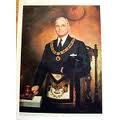How it has led 'degenerate moderns' to identify images of Mary... every where.
.
The Salon. Under the over-pass. On your toasted cheese sandwich. On the stain in your bath tub. On the shower tile...
.
The latest is the shower tile apparition (shown above). Here's the story:
.
"Cayol! Cayol honeee! The Blaessed Vergin is appearin' in our butifull new shawer stall! Quick! Call the newspaper!"
.
"Oh Gayree! You always seein' stuff where it ain't!" Carol said while she was walking into the lovely new bathroom Gary installed with tiles from Lowes.
.
To Carol's surprise she saw the image (shown in this article!) - "I dropped to my knees - it was definitely the Blessed Virgin!" Carol, a fine arts major in college told reporters that "anyone who has ever loved abstract expressionism - like most Americans do - would recognize it immediately!" Read the entire article here: Oklahoma couple find image of Virgin Mary on bathroom tile.
.
An eidolon.
.
I use that term for such images as the bath tile madonna - it does resemble images of the Virgin, in a caveman sort of style. Eidolon means 'an unsubstantial image: phantom'. popular culture has trademarked the term for other purposes, while Carl Sagan employed another similar term for imaginary images - but I can't remember what it was. Doh! But the reader knows what I mean.
.
UPDATE: Thanks to Eve, the word I was looking for is Pareidolia:
Carl Sagan hypothesized that as a survival technique, human beings are "hard-wired" from birth to identify the human face. This allows people to use only minimal details to recognize faces from a distance and in poor visibility but can also lead them to interpret random images or patterns of light and shade as being faces. The evolutionary advantages of being able to identify friend from foe with split-second accuracy are numerous; prehistoric (and even modern) men and women who accidentally identify an enemy as a friend could face deadly consequences for this mistake. This is only one among many evolutionary pressures responsible for the development of the modern facial recognition capability of modern humans. - Wiki (Again, thanks to Eve.)
.
Artists and creative people see images everywhere, in the formation of clouds, in the patterns of marble, in the smoke from their - and so on. In my opinion I think most of the 'miraculous' and abstract images one sees are really eidolons or rather, pareidolia. One can look at a photo of space and see in the patterns of gases and galaxies images similar to what one might see in nature for instance; or in the pattern of wood grain, one can maybe see a resemblance to waves on a shoreline, even landscapes and rock formations - stare at a pew during a boring homily and it can be like watching tv - if you're creative - or a little bit nuts.
.
Abstract expressionism.
.
I also think abstract expressionism can play a role in what people see. I came across a piece on how abstract expressionism was supported by the CIA and more or less foisted upon the art world in reaction to Soviet realism - or something like that - I'll get to it latter. But it got me to thinking... Oh, oh - a little knowledge is dangerous. I know.
.
Anyway. I think most people have desperately tried all of their lives to make sense of art works promoted as 'abstract impressionism'. Hence they stare and stare trying to see something, anything. For instance, I had to fight off the temptation to see something representational in Rothko's blackened canvas - I know I saw something - but what? So was it better for me to just experience it? See how that works though? There is a human need to recognize, to discern, to identify. It is especially important for Catholics, accustomed to churches stripped of ornament and recognizable art - they are starved for something representational and edifying - they need visual, tangible, recognizable images of faith. They need sign posts and aids - otherwise they begin to invent them and see them where they are not.
.
The CIA, art, and life as one big conspiracy theory.
.
So. What's the deal with abstract expressionism and the CIA? Who knew?
.
... the triumph of American art during the early Cold War years over stodgy Moscow-approved socialist realism as fashion.
.
After WWII, the U.S. government attempted to win European intellectuals away from the Communist Party by sponsoring avant-garde art, such as the New York School of abstract expressionist painting. But, American politicians, such as President Truman, objected to the taxpayers dollars being wasted on ugly stuff that their kids could do.
.
So, funding moved to the black budget of the CIA.
.
Frances Stonor Saunders' 1995 article in The Independent, Modern art was CIA 'weapon,' revealed some details of CIA sponsorship of the New York School. Her method of research was basically to call up old CIA men (or their kids) and get them talking about their triumphs during the good old days. This is not a particularly reliable method (it invites old-timers to exaggerate their importance), but it's certainly better than nothing. - Finish reading Abstract Expressionism and the CIA
.
???
.
Obviously realism - in every sphere of life - needs to make a come back for many.
.
Hottentot.



